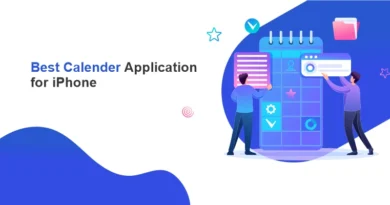Know All About Whatsapp Channels: A Complete Guide
In the age of digital communication, WhatsApp has emerged as a critical platform for businesses and organizations. WhatsApp Channels is an extension of the WhatsApp application. It offers a sophisticated way to engage with a vast user base. This comprehensive guide delves into the technicalities and functionalities of WhatsApp Channels, offering insights into how they can be leveraged for effective communication and outreach.
Understanding WhatsApp Channels
WhatsApp Channels are an advanced feature within the WhatsApp ecosystem. These are designed to facilitate large-scale communication between businesses and their customers. Above all, a WhatsApp Channel functions as a direct and personalized communication line, utilizing the popular WhatsApp platform to send messages, media, and engage with a broad audience.
These channels leverage the robust WhatsApp Business API, enabling businesses to automate interactions, integrate with existing CRM systems, and provide a seamless customer experience. The key advantage of WhatsApp Channels lies in their ability to reach a vast user base where they are most active, thus enhancing engagement and customer outreach.
It operates on a secure framework. The chatbot ensures that all communications are end-to-end encrypted. As a result, it maintains user privacy and data security. Through WhatsApp Channels, businesses can broadcast messages, provide customer support, send notifications, and engage in two-way conversations, all within the familiar and widely-used interface of WhatsApp.
This integration of convenience and functionality makes WhatsApp Channels an essential component of modern digital communication strategies.
Technical Infrastructure of WhatsApp Channels
The backbone of WhatsApp Channels lies in their integration with the WhatsApp Business API. This API is a robust framework that allows for the automation of message delivery, the integration of chatbots.
Further API also allows synchronization with Customer Relationship Management (CRM) systems. Lastly, the API uses webhooks to provide real-time updates and sends requests over HTTPS, ensuring secure data transmission.
Key Features and Functionalities of WhatsApp Channels
- Message Broadcasting: WhatsApp Channels allow for the dissemination of messages to a broad audience, which can include alerts, updates, and promotional content.
- Automated Responses: Through AI and machine learning algorithms, channels can be configured for automated responses, enabling efficient customer interaction.
- Data Analytics: Integrated analytics tools provide insights into message delivery, read rates, and engagement metrics, crucial for strategizing communication efforts.
- Interactive Communication: The use of interactive elements like quick replies, buttons, and AI WhatsApp Chatbot enhances user engagement.
- End-to-end Encryption: WhatsApp ensures that all communications are end-to-end encrypted, providing a secure environment for both businesses and users.
Deployment and Integration
Deploying a WhatsApp Channel requires a thorough understanding of the WhatsApp Business API and its limitations. Businesses must apply for access to the API and adhere to WhatsApp’s policies. Once access is granted, the channel can be integrated with existing business systems, requiring expertise in software development, particularly in JSON and RESTful APIs.
Compliance and Best Practices
It is crucial to comply with WhatsApp’s policies, including respecting user consent and privacy. Businesses should adopt best practices like obtaining explicit opt-in from users, providing clear opt-out options, and ensuring that the content is relevant and valuable to the audience.
In conclusion, WhatsApp Channels represent a powerful tool in the field of digital communication strategies. With their advanced technical infrastructure, they offer a secure, efficient, and engaging way to reach large audience.
Businesses looking to harness the full potential of these channels should invest in understanding the technical requirements, ensuring compliance with regulations, and continuously analyzing engagement metrics to refine their communication strategies.



